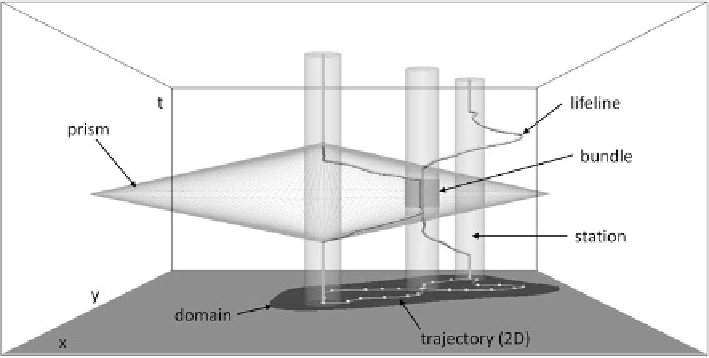Geography Reference
In-Depth Information
20.1
Time Geography as the Conceptual Foundation
Time geography has long been the de facto framework for geographers to analyze
space-time activities of individuals and the everyday workings of society at locales
of operation (Berry and Linoff
1997
). Central to this analytical framework is an
emphasis on modeling individual behavior, not just empirical analysis of large
groups (Morrill
2005
). Hägerstrand's seminal work on
What about People in
Regional Science
advocated for attention to individual human beings in an increas-
ingly complicated environment to examine the quality of life for of individuals and
collectives. To support such research, he proposed the basic framework of time
geography, including the concepts of lifelines, stations, bundles, domains and prisms
(Hägerstraand
1970
). Advances in geospatial information analysis and visualization
have led to significant research developments in time geography, such as computing
activity-travel patterns of masses of individuals (Kwan
2004
), activities and inter-
actions in a hybrid physical-virtual space (Shaw and Yu
2009
), accessibility with
varying travel velocity (Miller and Bridwell
2009
), and many other improvements.
This chapter offers yet another improvement to time geography with a new approach
to examining daily space-time paths of individuals with intensive observations
through location-aware devices. We have developed conceptual and computational
frameworks for space-time analytics of daily movements of individuals to project
their patterns of life and potential social networks. The basic concepts of time
geography are used to recognize lifelines, stations, bundles, and domains (Fig.
20.1
),
but we introduce patterns of life, locales and social networks to construct geospatial
narratives of their routine activities, stages in life, and opportunities for social
interactions.
Fig. 20.1
Basic conceptual elements of time geography (Adapted from Hägerstraand
1970
)

Search WWH ::

Custom Search